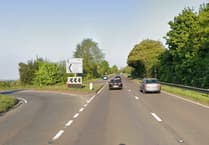Surrey's 11 district and borough councils and the county council have amassed debts of £5.5 billion, it has been revealed, prompting a warning that others could follow Woking in declaring themselves bankrupt.
Woking Borough Council issued a Section 114 notice in early June, effectively admitting it does not have the resources to meet current expenditure after amassing £1.9 billion in debt.
It is thought to be the biggest financial failure in local government history, and has been followed by a tide of proposed cuts and tax hikes in recent weeks.
But now Waverley Borough Council’s back-office merger partner Guildford has also been warned it could be on the path to bankruptcy unless almost £20m in cuts can be found in the next three years.
Guildford’s financial worries have been blamed on an over-ambitious investment programme, as well as a £10.2m accounting error linked to a Covid grant – leaving the authority with £300m of debt and an £18.3m projected deficit over three years.
And laying bare Guildford’s difficulties, officers said they were “gravely concerned” about the council’s financial position and have warned the coming cuts will “fundamentally change the services the council delivers”.
A revised budget for 2023/24 will be discussed by the council’s executive tonight (Thursday) and at full council on July 25.
Officers said it was not necessary to issue a Section 114 notice, stopping all non-essential spending. But that the possibility of doing so, following in the footsteps of Woking, could still be brought to a full council meeting in October.
The 11 districts and borough councils across Surrey, and the county council, have a total debt of £5.5bn, of which £1.9bn is to be found in Woking.
By comparison, Waverley Borough Council reported debts of just under £160,000 on March 31, 2023 – just over half that of its Guildford merger partner.
The report added: “It may be argued many councils will be in a comparable situation in the coming years; however, it is the view of the S151 officer and the corporate management board that Guildford Borough Council’s position is at a higher and more urgent level of risk than most councils of a comparable size and scale.”
Officers said this was because of various factors including increasing demand for services, the state of the UK economy over the past year, and reductions in government funding over many years.
In Guildford the challenge is “greater and more urgent than most councils” because along with these factors there was also “a legacy of ambitious decisions to support infrastructure and regeneration” leading to the £300m debt, expected to rise further.
Projects such as a new road bridge replacing the level crossing in Ash, with a cost that has now risen to £44.5m, and the 1,500-home Weyside Urban Village proposed alongside the River Wey in Guildford, with a projected deficit of £50m, have both “experienced significant scope creep and cost pressures over years”.
A £10.2m accounting error had also been discovered at the council, where a Covid-related grant which was due to be repaid to government had been incorrectly included in earmarked reserves.
Strict measures brought in immediately will include no new spending without explicit approval, temporary measures to stop all non-essential spending and no hiring staff or renewing of contracts without approval from the council’s corporate management board.
Guildford will also use its reserves to bridge the shortfall and sell-off council-owned assets.





Comments
This article has no comments yet. Be the first to leave a comment.